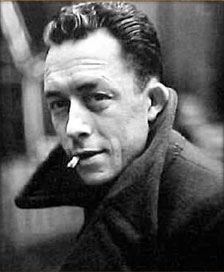For a hundred years now, science and religion have been mixed together far too much.3 More supple examination, indeed, restores complete freedom both to Christians and to unbelievers. The former no longer try to “prove” revelation, while the latter no longer base their arguments on the Bible’s doubtful genealogies. The problem of faith does not lie in quibbles of this kind. Pouget uses common sense to restore prestige to grace. On this issue he puts things back into their rightful places, the only way to make the mind progress.
These are the real merits of a method like his. And however discreet they may be, these merits are so invaluable as to make us forget the astonishing attitude that kept Copernicus and Galileo on the Index for three hundred years, or that accords divine status to the slightest comma in the Bible. Is all of Father Pouget contained in this method? We might perhaps expect to find that there is also, in addition, some whiff of existence, some more human resonance. The very method, however, ought to disclose, to those who are looking for it, the secret of a great soul.
When M. Guitton writes that the principle Father Pouget followed in his researches was “a courageous indifference to his desires,” we seem indeed to stand face to face with the man and, for a second, to possess him completely. Again, we feel completely informed, as to his human side, when Father Pouget confides to us: “There are moments, now that I am drawing near my end, when I have questions which might lead toward disbelief.” It would be puerile to exaggerate the meaning of these confessions.
They are the significant shadows of the portrait, the fold of the lip that Piero della Francesca gave the Duke d’Orbino, It would be nothing without the rest—the hard eyes, the imperious nose, and even the landscape in the background. But, without it, the face would lose its secret and its humanity.
Here, in conclusion, I can repeat the question I asked in the beginning: “But who was M. Pouget?” Today, when India is in fashion, one is certain of an audience if one talks about gurus. Indeed, it is one of those spiritual masters whom this priest calls to mind. Yet this cannot be said of his influence. His teaching is really not aimed at illumination or at the inner god; this strange guru has transformed historical criticism into an instrument of asceticism.
He appeals to common sense in order to support the revelation of what goes beyond our senses. I am not competent to judge if he was rewarded in what was dearest to his heart.4 One can, on the other hand, easily feel that a book like the one that has just been devoted to him is not only a homage but also a proof of the efficacity of such teaching.
For I have scarcely discussed the book itself, faithful in this, I suppose, to the intentions of its author. In another book by Guitton we read that “the elect are those who realize their own ideal type.” In this respect, we can see that we have today a “portrait of a chosen man” that appears as an exceptional triumph in our literature.
To write it required not only talent, but also the powerful motives of admiration and affection. M. Guitton indeed brings clarity to the most delicate ideas, which is a feature of the highest style. He also breathes warmth into abstractions and passion into objectivity. This comes from the soul. A virile piety does the rest and gives this fine book its tone.
It would be ungracious to insist upon the reservations that the ethical a priori one feels in certain pages of the book (pp. 130 passim, 157) can inspire in a non-Catholic thinker. It is enough to note that such reservations exist. The essential thing is that this book of good faith should be accorded its rightful place: far above the vain remarks that, today, are heard like the sounding brass and tinkling cymbal mentioned by St. Paul.5
Review published in the Cahiers du Sud, April 1943
1 Though apparently only of minor interest, this essay throws considerable light upon Camus’s attitude toward religion. Like Diplôme, which he wrote in 1936 on Métaphysique chrétienne et Néo- platonisme, it shows that he had a serious interest in the intellectual history of Christianity, and in the problems which this religion presented. But, unlike Diplôme, which retains complete academic objectivity, this essay on Father Pouget shows more of Camus’s own opinions. Thus, when he dismisses as “quibbles” (p. 225) the type of problem that drove Ernest Renan from the Church, his own essentially moral objections to Christianity stand out much more clearly by contrast —P.T.
2 Published by Gallimard, 1943.
3 In fact, contemporary disbelief is no longer based on science in the way that it was at the end of the last century. It denies both science and religion. It is no longer the skepticism of reason when confronted with miracles. It is a passionate disbelief.
4 It will nevertheless be noted that Guitton’s fine thesis on Time and Eternity in Plotinus and Saint Augustine begins with a methodological distinction between mind and mentality.
5 Le Portrait de M. Pouget was written before the war. Since the armistice, M. Guitton has published books and articles of which I would be less inclined to approve.
The end
